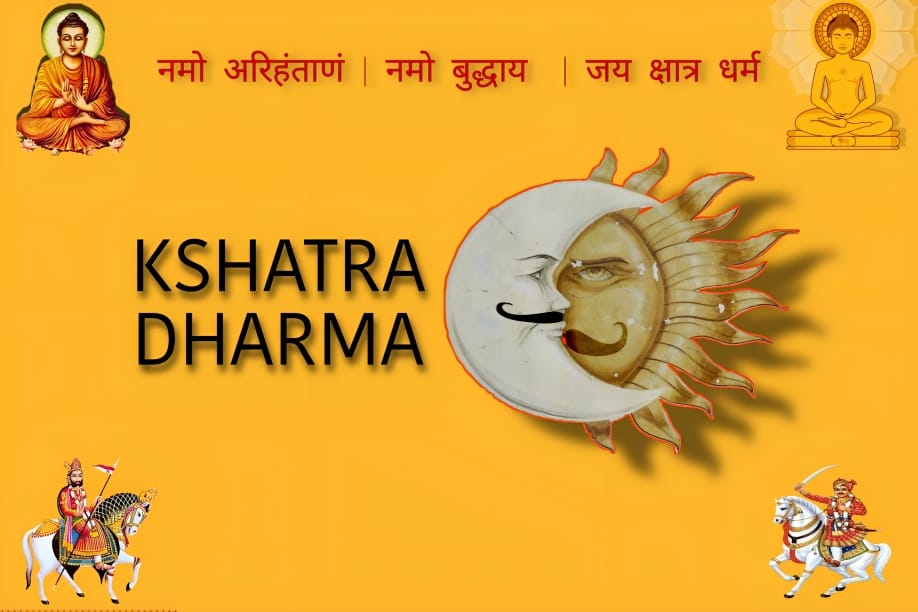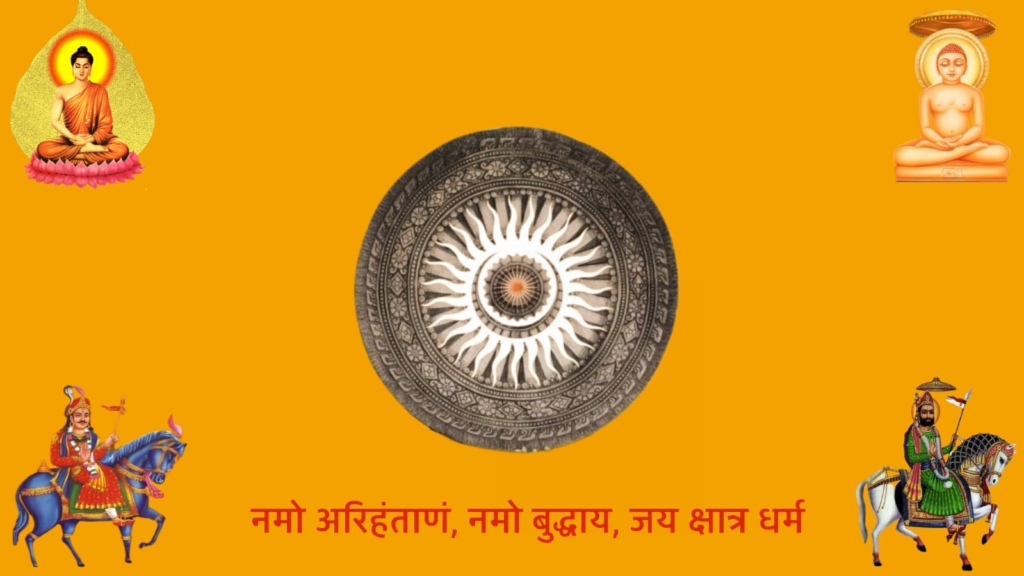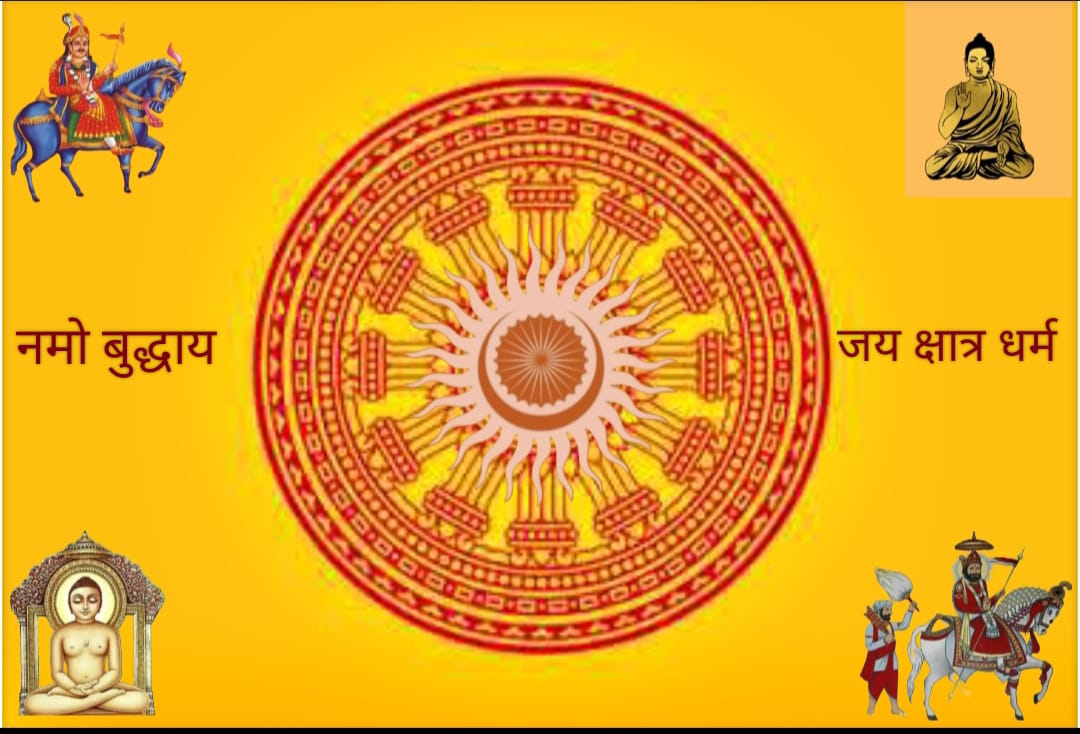[20]: The Different Flags of Kshatraa Dharma : Understanding the Concept
- Flag Developed by Ravindra Singh Bidawat & team, shows a Kesariya background of Overlapped Sun & Moon representing Suryavansh and Chandravansh divisions of the Kshatriya community, with the 24 spokes Ashoka Chakra at the centre.

2. Second Flag Developed by Divyansh Singh Gautam, shows Dhammachakra at the Outer, with Overlapped Sun & Moon representing Suryavansh and Chandravansh divisions of the Kshatriya community, with the 24 spokes Ashoka Chakra at the centre. Gogaji at Lefthand Top, Gautam Buddha at Righthand Top, Mahavir at Lefthand Bottom & Ramdevji at Righthand Bottom

3. Developed by Rajat Tanwar, It adds the mantra of Kshatra Dharma “Namo Arihantanam, Namo Buddhay, Jai Kshatra Dharm ”

4. Developed by Shivendra Parihar, this version aesthetically captures all the nuances of the Kshatra Dharm as improvement of a concept developed by Divyansh Gautam.

Salient Features of the Kshatra Dharm Flag
- However, each of these Flags with varied designs have a Sun and a Moon at the centre of a Kesariya background. The Sun and Moon represent the Suryavansh and Chandravansh to which almost all the Rajput or Kshatriya clans associate.
- The Kesariya background represents the longstanding Kshatriya tradition of sacrifice that marks Rajput history, from the Mahajanpada times to the modern times.
- The 24 Spokes Ashoka Chakra commemorates the memory of the greatest Kshatriya ruler Ashok Moriya, but it also reinforces the idea that Dhamma (ethical teachings) preached by Lord Buddha and propagated by Ashoka must remain central to the codes of Kshatra Dharma.
- A Kshatriya or Rajput Being (Suryavansh and Chandravansh) is in turn bound by the Dhammachakra, which he must endeavour to always keep running. The idea of Dhammachakkapravartan or turning of the Wheel of Law, can be traced to Lord Buddha, who is said to have set the “wheel of dharma” in motion when he delivered his first sermon. This “turning of the wheel” signifies a great and revolutionary change. A Kshatrya’s life is not just bound by the simple ethical teachings but also it is his duty to be a vehicle turning the wheel of revolution.
- Lord Buddha and lord Mahaveer at the Top signify the ancient Shraman parampara of the Kshatriya, while Veer Gogaji Chauhan and Baba Ramdevji Tanwar signify the medieval Nath parampara of the Kshatriyas.
Overall, it must be noted that Kshatra Dharma cannot be associated with pakhand, mundane ritualism and devotion (bhakti) of any individual (living or dead).Instead of devotion towards an individual, it emphasizes on devotion toward the community alongwith self-actualization, instead of ritualism it emphasizes on productive action and productivity, instead of status-quo it emphasizes on turning the wheel of positive-revolution towards holistic progress.

